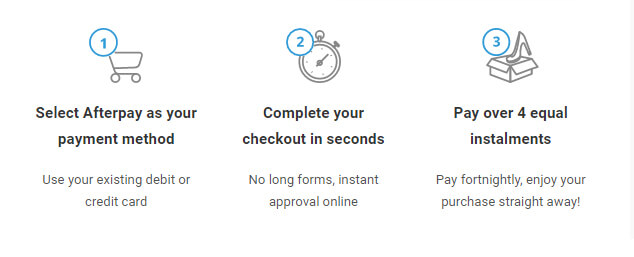SAME DAY SHIPPING!
Hurry offer expires in
How to Decode Dog Barking Sounds & Stop Nuisance Barking

Your Guide to Decoding Your Barking Dog & Solving Nuisance Barking:
-
Knowing the Reasons Behind Your Dog Barking
-
Understanding the Meaning of Your Dog’s Barking Sounds
-
Stopping Your Dog’s Excessive Barking Using Bark Collars
-
Getting the Right Bark Collar for Your Dog
Why Do Dogs Bark for No Reason?

Dogs do not just bark for no reason. The first step in mastering the canine language or decoding your dog’s bark sounds is to KNOW the underlying causes behind each episode of barking.
There are basically 11 reasons that cause a dog to (excessively) bark:
-
Breed
-
Separation Anxiety
-
Barrier Frustration
-
Boredom
-
Social Facilitation
-
Territoriality
-
Environmental Stimuli
-
Seeking Attention
-
Habit
-
Compulsive
-
Old-Age-Related
These reasons for barking hence nuisance barking are, indeed, the most common causes of barking dogs. So, let’s dig deeper to the roots of each of these reasons.
Breed
You may think this is unfair... but... it has been studied that Beagles, Miniature Schnauzers, Dalmatians, Shelties, tiny terriers (Yorkie/Silky), Dachshunds, Collies, and Cockers, are more likely to bark excessively. Resolving their nuisance barking may be more challenging.
Separation Anxiety
Also known as Confinement Anxiety and Noise Phobia - can fire-shot excessive barking when the owners are not around. Dogs with separation anxiety DO NOT want to be alone.
So, they bark and howl due to the urge to somehow “reach” someone who might be able to be with them... or they are simply calling out for their owners.
Barrier Frustration
This kind of barking usually happens if your dog cannot get to you - most dogs get upset if they see their owners on the other side of the house but can’t get to them. The excessive barking often gets resolved if you and your dog get back together.
Boredom
This could also be Social Isolation. If your dog is bored or isolated, he/she tends to bark more as if “asking” if there’s anyone out there to be with or play with. This is often a friendly bark, like an invitation for the company or play and could be frequent.
Social Facilitation
Most dogs tend to bark when they hear other dogs barking. This is common to all dogs as it roots back to their ancestors - the Wolves. This kind of barking serves to warn any “dog intruder” and establishes the territory of the pack.
Territoriality
This is an aggressive kind of barking - this is not just a simple warning to the owner. Oftentimes, the dog will not stop barking until the visitor leaves. Most dogs get a rewarding feeling when they bark at passers-by, metre readers and delivery persons since they always leave - if this frequently happens, your dog would think that always barking at passers-by is such a great act.
Environmental Stimuli
This is a common response of a dog to everything that happens around him/her - the rustling of a tree, the neighbour’s cat passing by, kids biking outside, etc. This kind of unnecessary barking occurs in dogs who find everything exciting throughout his/her day.
Seeking Attention
This kind of barking develops when dogs have been rewarded with too much attention in the past. Oftentimes, by being scolded or yelled at - any attention is good for them. This is an equal behaviour of a toddler in a grocery store, with his/her mum, repeatedly saying “mum, mum, mum, mum…” to be noticed.
Habit
Also known as conditioned. Some dogs grew up in places wherein any amount of barking was accepted (like animal shelters), but they now live in a peaceful and quiet environment. Most of them get pumped up by doorbells or other noise stimuli. So, they bark their heads off.
Compulsive
Some dogs are compulsive in nature. This is often developed just like fly-biting, chasing lights and chasing tails. One way of displaying compulsivity in dogs is through barking. This happens whether or not the owner is around.
Old-Age Related
Just like humans, senior dogs can suffer from dementia-like, cognitive dysfunction. These dogs tend to bark constantly as a sign of their cognitive decline… They mostly bark in a monotonous way and even without any trigger.
Now, knowing these reasons for your dog barking will give you ease in decoding each barking sound. So, let’s go to the next stage…
What is My Dog Saying When He Barks?
Understanding the meaning of your dog’s barking sound is important not just in mastering the canine language but also in developing a better relationship with your dog.
So, let’s start this dog-linguistic lesson…
To start decoding your dog’s barking sound, there are 3 dimensions to put in mind:
Decoding the Bark Sound Pitch
Dog barking sounds can come in a low pitch and high pitch and these explain a LOT about your dog’s personality.
Low pitched bark sounds - like a dog’s growl, it often means anger and a possibility of aggression. Most dog behaviourists interpret low pitch bark sounds as “stay away from me”.
Lower pitched bark sounds are used by dogs to appear “larger and more dangerous” than any other dogs. This is their technique to keep other animals away and establish their territory. So, they growl.
High pitched bark sounds - often a friendly invitation like saying, “you can come near me, I bring no harm”.
Higher pitched bark sounds, like whimpering, are used by dogs to appear “smaller and friendly”. Even if they are actually large, dogs bark at a higher pitch to signal others that they are safe to approach.
Decoding the Bark Duration
 There is a significant difference in the message communicated by your dog between long barks and short barks.
There is a significant difference in the message communicated by your dog between long barks and short barks.
Shorter Bark Duration - signals urgency, short bursts of barks indicate the immediate need to get attention due to alarm or anger. Often, this bark duration indicates that your dog is afraid.
Longer Bark Duration - less urgent, generally indicates unhappiness or displeasure. Longer barks can also turn into a growl or a howl. If the sound is longer, it means that your dog is sure of his/her next step (such as an attack) or simply holding his/her ground and never backing down.
Decoding the Bark Frequency
 Your dog’s bark frequency can explain your dog’s temperament, especially during a barking episode.
Your dog’s bark frequency can explain your dog’s temperament, especially during a barking episode.
Single Bark - also bark sounds that are not repeated or rather spaced out, signals a low level of excitement. A bark or two signals that your dog is only mildly interested in something.
Repeated Barks - this bark frequency indicates insistence especially if your dog barks almost non-stop. This could signal joy or excitement as much as anger or unhappiness.
Now that you understand these 3 dimensions to help you decode your dog’s bark sound… Let’s go to the next guide - identifying the types of the dog barking.
The 6 Types of Dog Barking
Knowing these 5 general types of barking will certainly help you understand what your dog is trying to say every time he/she barks.
-
Alert or Alarm Barking


Your dog wants to alert you and your other dogs (if there’s any) to check what’s happening around. This is usually represented by these bark sound pattern:
-
Midrange pitch with continuous and rapid barking - also known as “Calling the Pack”.
-
Midrange pitch with 3 to 4 barks in rapid strings then pauses - similar to saying “Look here, there’s something you need to check.”
-
High or midrange pitch with 1 or 2 sharp short barks - this is the greeting bark sound as if your dog is saying “I think this one is friendly, hello there!”
-
-
Demand Barking


Apparently, this kind of barking signals you that your dog wants to get something and is asking you to comply… (Who’s the boss, now? Haha).
-
Lower to midrange pitch with single sharp short barks in between pauses - this is like saying “Hey, stop that now!”
-
Higher pitch with single sharp short barks in between pauses - this indicates that your dog is curious or maybe asking a question like “Hey, what’s that?”
-
-
Aggressive or Fearful Barking


It is important to recognize this kind of barking since this is one way for you to get alerted and know if your dog may be sensing real danger:
- Lower pitch with a fairly continuous string of barks but slower than usual - this means that your dog is sensing the danger coming in real close and saying “I don’t think this creature is friendly. Defend the territory!”
-
High pitch with a very short bark that is almost just a yelp - this can also be an alert barking but this is more of your dog saying “Ouch! That hurts!”
-
High pitch with a long continuous string of barks or series of yelps - this means that your dog is either in pain or in fear saying “Help help, I’m hurting” or “Help! this creature is scaring me.”
-
Playful or Happy Barking


This is the kind of barking you usually hear when your dog is playing with you or other dogs… More like an instigation or invitation to play:
- Midrange pitch with stutter barks which sounds like “harr-ruff” - you’ll also see your dog barking like this with his/her rear held high, tail wagging and front legs laying flat on the ground. It’s like saying “Hey! Come, let’s play!”
-
Midrange pitch with rising barks in between pauses - this occurs during play and is similar to saying “This is so much fun!”
-
Anxious Barking


This kind of barking is common to dogs who are usually left at home alone and to those who are confined in a solitary area with less to no interactions (like dog toys and tasty chews):
- Midrange to high pitch with prolonged, incessant barking in long intervals - this can turn into howling and similar to calling out to you, the owner - “I feel so lonely… Please come back” or could be “Is there anyone there? I feel so alone”.
-
The Nuisance or Excessive Barking


This kind of barking can actually be all of the other 5 types (alert, demand, aggressive, play, anxious) but is repeated and often prolonged almost all throughout the day which disturbs the peace and quiet in your home and in the neighbourhood.
You can tell that this is the unnecessary type of barking and is usually due to habit, compulsivity, environmental stimuli (birds, cats, kids), social facilitation (other dogs), seeking attention, boredom, separation anxiety (interactive dog toys may help) and barrier frustration.
Now, this is the kind of barking that we need to resolve… Read on to know-how.
How Do I Stop My Dog From Barking at Everything?
Once again, COMPLETELY stopping your dog from barking is not realistic and debarking them is unfair and unnatural. What you need is to stop your dog from excessively barking for unnecessary reasons.
This is where training comes in.
The most basic and easy-to-do bark control training with your dogs is the “Quiet” command PLUS treats.
Here’s how it works:
Whenever your dog barks, you can say “QUIET” and put the treat on the ground to distract your dog from whatever he/she is barking at. Easy peasy, aye?
However, this kind of trick or technique does not always come in handy especially if no one is around to give the “quiet” command and put down the treat.
This is where the bark collars come in.
So, What are Bark Collars?
Dog bark collars are training tools to help you control excessive or nuisance barking. These tools do the job for you, training your dog to bark at acceptable levels since they automatically work in detecting your dog’s bark sound and in administering the correction or stimulation to deter your dog from excessive barking.
How Do Bark Collars Work?
Basically, a bark collar will detect your dog’s bark sound and the vibration of your dog’s vocal cords as he/she barks - dual detection is best in ensuring the correct timing of correction. Then, stimulation will be activated to distract your dog from barking.
There are certain safety and training features that ensure your dog will not get overcorrected. Look out for features that will effectively train your dog to quit the nuisance barking and just bark at acceptable levels.
Now, bark collars have different types of stimulation or correction - NOT just the electric “shock” kind of bark collar. To get the right bark collar for your dog, you have to identify your dog’s temperament and the type of bark collar that will suit him/her.

The 4 Types of Bark Collars
Since dogs have unique temperaments and sensitivity levels, it is comforting to know that you can choose a variety of bark collars with different kinds of stimulation - some can even do two or more types of correction. Generally, we have:
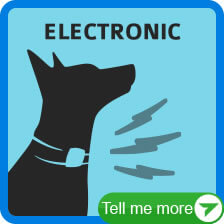 |
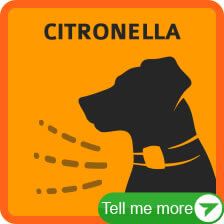 |
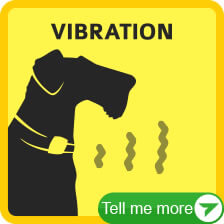 |
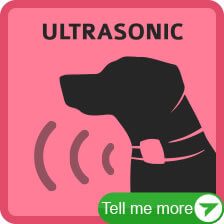 |
|---|
By the way, there are bark collars that are rechargeable, there are also some that come with replaceable batteries.
We also recommend that you choose a waterproof bark collar with more safety features such as Dual Detection (bark sound & vocal cords vibration) to avoid accidental corrections... and Dual Activation (one or two of the different types of stimulation) so you will always have the option to switch between stimulations - depending on your dog’s temperament.
Also, look for a bark collar that has a really good warranty (usually 1 to 3 years)... and a unit that allows automatic and progressive levels of stimulation - this will help in fast and easy bark control training.
We also highly recommend that you get the right bark collar for your dogs from these proven and reliable brands: PetSafe, SportDOG, DogWatch, Educator, and Num’axes - these are the trusted brands in Australia when it comes to Electronic Dog Collars.
Electric/Static Bark Collars
This type of bark collar is the most common and is also known as a “shock” collar or zap collar - This is highly recommended for dogs with stubborn breeds… or hounds that are simply strong-willed.
The correction includes safe and harmless static pulses - this does not hurt your dog in any way, this kind of stimulation is only enough to distract your dog once he/she sets off on a barking frenzy.
Citronella Spray Bark Collars
The Citronella Spray Bark Collars are commonly used by dog-owners who do not want their dogs to be “zapped”. This type of collar is best for dogs who have a sensitive personality and are more responsive.
The stimulation comes in bursts of Citronella - a lemon-scented natural oil that is also great for repelling insects. This is a harmless deterrent for dogs and equally effective in eliminating nuisance barking.
Ultrasonic Bark Collars
Ultrasonic Bark Collars are widely used by dog-owners who do not want any zaps or electric “shocks” and Citronella spray correction to their dogs. This kind of bark collar is proven to work with any type of dog-temperament except SUPER stubborn hounds.
Also, this is not recommended for dogs who are deaf or those seniour dogs whose sense of hearing may have declined.
The correction is an ultrasonic sound - this is a high-pitched sound that is NOT audible to human ears. Dogs respond more to ultrasonic sound, that’s why it is effective in distracting your dog from excessive barking.
Vibration Bark Collars
Vibration Bark Collars are best for dogs with even more sensitive temperament, usually tiny to small dogs. This is also commonly used by folks who have seniour dogs.
This type of bark collar is accompanied by tone or beeps as an added deterrent. The correction will be activating vibration to your dog’s neck, near the vocal cords, to distract your dog from barking.
To wrap it up:
Properly decoding your dog’s barking sound requires that you know the reasons behind such barking habits and understand the type of barking and the bark sounds (pitch, duration, frequency).
This will eventually help you to solve the nuisance barking especially if you get the right bark collar for your dog.
 The Dogline
The Dogline





















